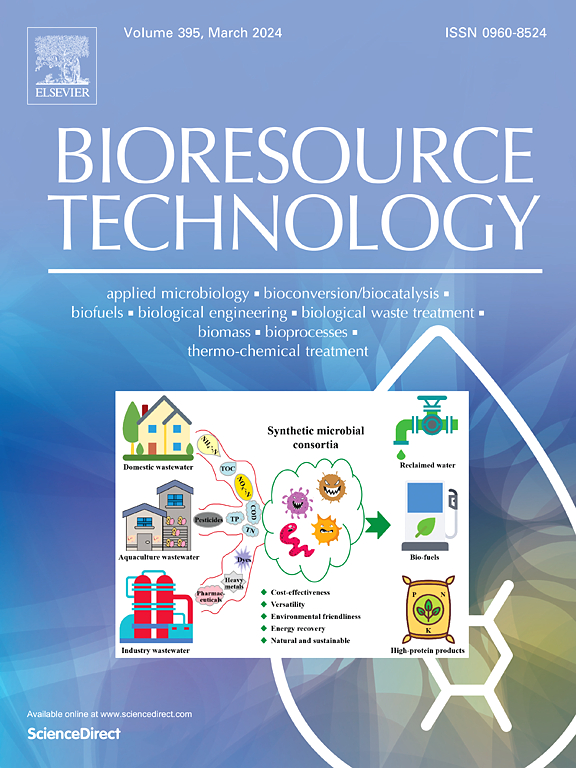Efficient fractionation of lignocellulosic biomass with in-situ generated diformylxylose as renewable solvent
IF 9
1区 环境科学与生态学
Q1 AGRICULTURAL ENGINEERING
引用次数: 0
Abstract
Development of sustainable solvents for biomass biorefining remains a pivotal challenge of green chemistry. This study presented a circular biorefining strategy that valorized hemicelluloses into biobased solvent diformylxylose (DFX; Hansen solubility parameter: 21.4 MPa−1/2) for acetal-protection pretreatment. The DFX-H2O cosolvent system (90/10, w/w), with addition of formaldehyde and HCl, showed a decent yield of acetal-protected lignin (84.7%) and enzymatic conversion of acetal-protected cellulose after deprotection by acid hydrolysis (82.9%). Crucially, hemicelluloses-derived xylose was concurrently converted into additional DFX in situ during pretreatment, sustaining the delignification process. The spent DFX (including newly formed) was effectively recovered by crystallization and the isolated acetal-protected lignin was upgraded to monomers via hydrogenolysis at near-theoretical yields (46.5%). This work demonstrates a self-reinforcing cycle where a biomass component is transformed into the key solvent enabling efficient fractionation.

用原位生成的二甲酰木糖作为可再生溶剂对木质纤维素生物质进行高效分馏
生物质生物精炼用可持续溶剂的开发仍然是绿色化学面临的关键挑战。本研究提出了一种循环生物精制策略,将半纤维素转化为生物基溶剂二甲酰木糖(DFX; Hansen溶解度参数:21.4 MPa−1/2),用于缩醛保护预处理。在DFX-H2O共溶剂体系(90/10,w/w)中,甲醛和HCl的加入使乙酰保护木质素的产率达到84.7%,酸水解脱保护后乙酰保护纤维素的酶转化率达到82.9%。至关重要的是,在预处理过程中,半纤维素衍生的木糖同时在原位转化为额外的DFX,维持去木质素过程。废DFX(包括新形成的)通过结晶有效回收,分离的缩醛保护木质素通过氢解升级为单体,收率接近理论水平(46.5%)。这项工作展示了一个自我强化的循环,其中生物质成分转化为关键溶剂,从而实现有效的分馏。
本文章由计算机程序翻译,如有差异,请以英文原文为准。
求助全文
约1分钟内获得全文
求助全文
来源期刊

Bioresource Technology
工程技术-能源与燃料
CiteScore
20.80
自引率
19.30%
发文量
2013
审稿时长
12 days
期刊介绍:
Bioresource Technology publishes original articles, review articles, case studies, and short communications covering the fundamentals, applications, and management of bioresource technology. The journal seeks to advance and disseminate knowledge across various areas related to biomass, biological waste treatment, bioenergy, biotransformations, bioresource systems analysis, and associated conversion or production technologies.
Topics include:
• Biofuels: liquid and gaseous biofuels production, modeling and economics
• Bioprocesses and bioproducts: biocatalysis and fermentations
• Biomass and feedstocks utilization: bioconversion of agro-industrial residues
• Environmental protection: biological waste treatment
• Thermochemical conversion of biomass: combustion, pyrolysis, gasification, catalysis.
 求助内容:
求助内容: 应助结果提醒方式:
应助结果提醒方式:


